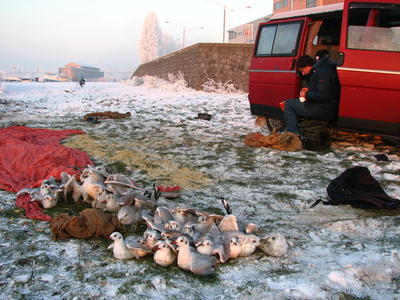|
BIRD RINGING RESEARCH ON BLACK-HEADED GULLS (Larus ridibundus) - WINTER GUESTS.
The main question in the long-term colour ring research is: What is the survival and site fidelity of the Black-headed Gulls which winter in The Netherlands? In Amsterdam (1997-2003 and 2006-present), Arnhem (1996-present), Baarlo (2010-present), Deventer (1996-2005), Den Haag incl. Voorburg and Leidschendam (2011-present), Groningen (1996-present), 's-Hertogenbosch (1998-2003), Hilversum (1996-present), Kampen (1996-2003), Maastricht (2010-present), Roermond (2010-present), Utrecht (1996-2003) and Zoetermeer (2011-present Black-headed Gulls have been colourringed. See here for a unique list of all ring recoveries from by me, in the winter ringed Black-headed gulls. See each month on the map. 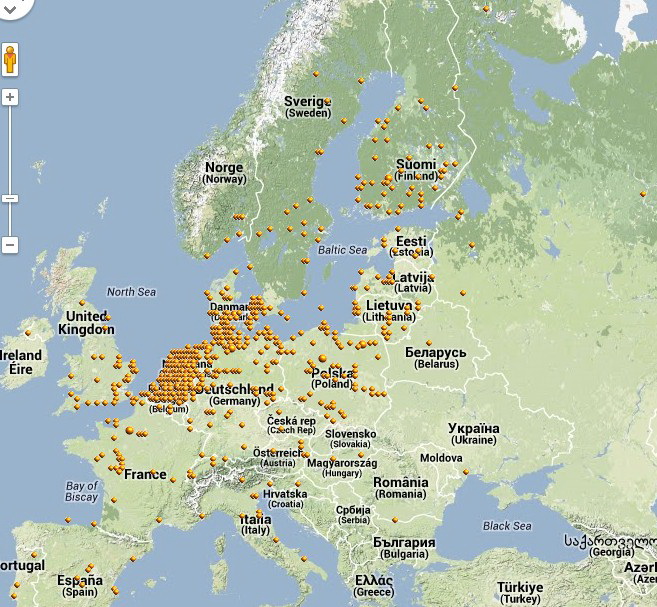
© Google Maps: markers are clickable, zooming in and -out, and sliding is possible.
See here a video about the catch and ringing of Larus ridibundus and Larus canus by Frank Majoor e.a. in Zoetermeer on 3 december 2010! (© Benny Middendorp) 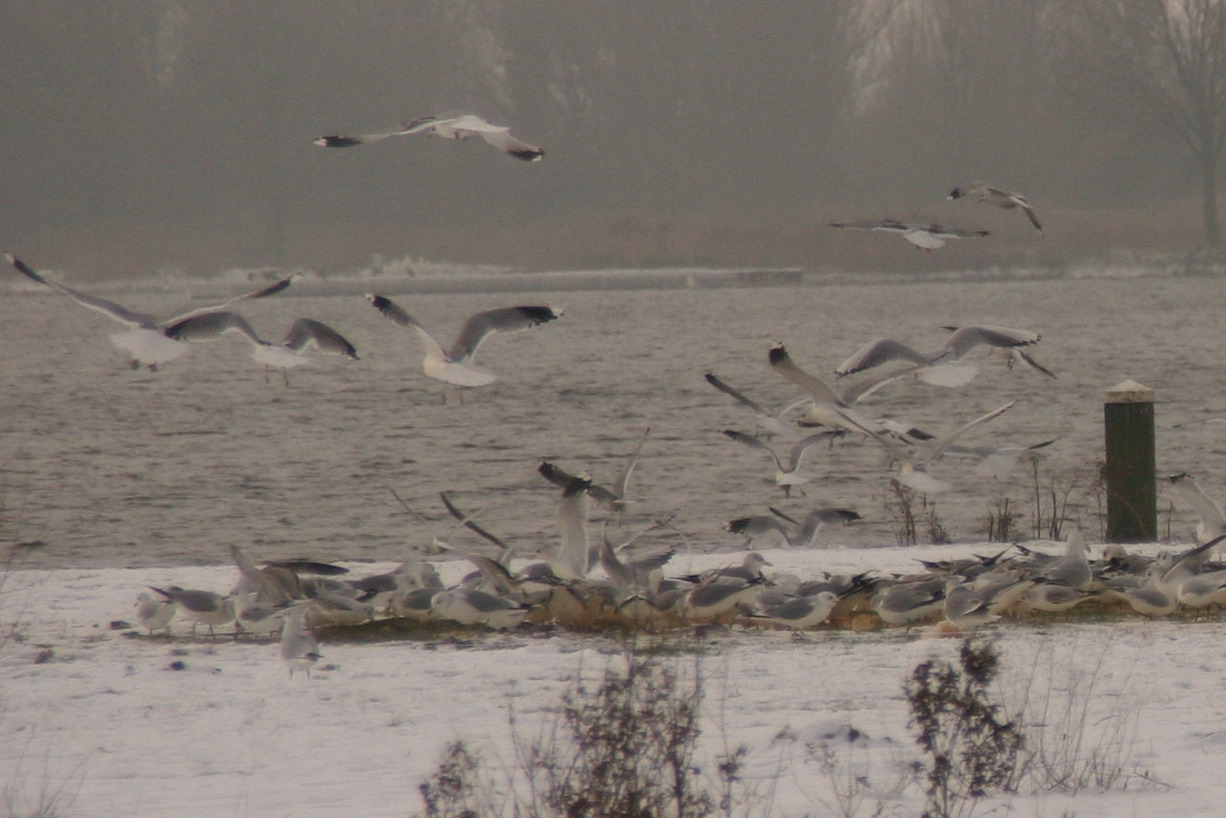
See here a video about the catch and ringing Larus ridibundus and Larus canus by Frank Majoor e.a.! There are more photo's of bird ringing to be viewed here: Gallery ringing at Zoetermeer, 08-01-2010 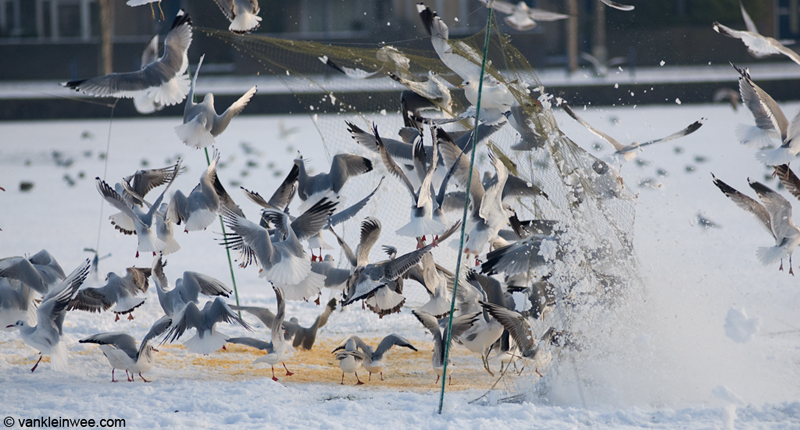
Gallery ringing at Nijmegen, 17-12-2009 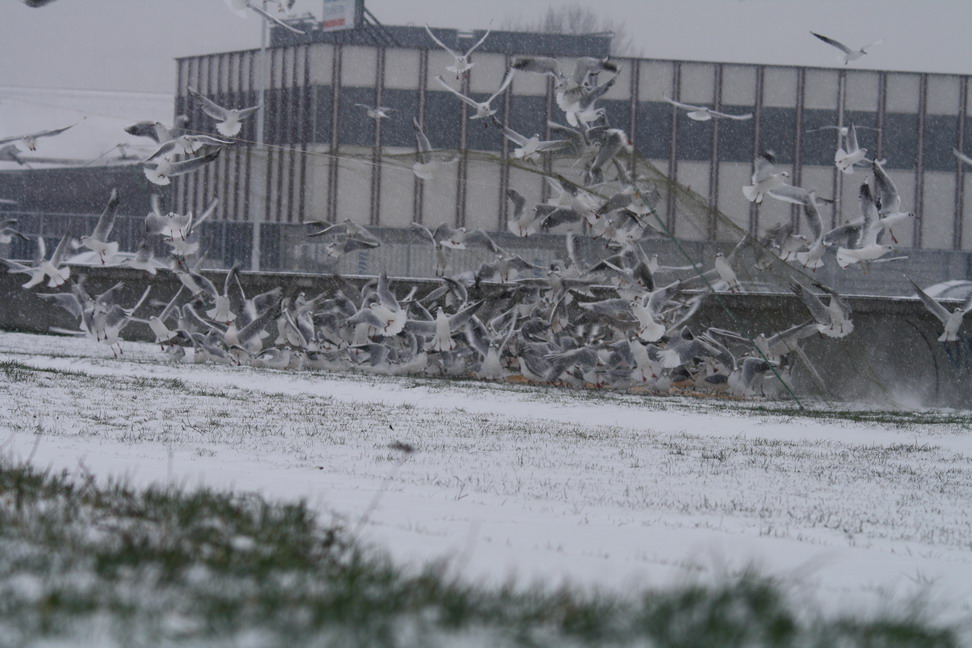
Gallery ringing at Oostersluis, Groningen, 20-12-2009 Gallery ringing at Oostersluis, Groningen, 08-01-2009 Gallery ringing at Benthuizerplas and Noordhovense plas, Zoetermeer 06-01-2009 (© Benny Middendorp) Codes which have been used: White with 2 numbers and/or letters: 2011-now (see photo) Yellow (now faded to white!) with two numbers and/or letters: 1996-1999 Blue with 2 numbers and/or letters: 2000-2003 Red with 2 numbers and/or letters: 2004-current. 
White F-M. Arnhem, Musis Sacrum. Novembre 2011 © Jeroen Nagtegaal. Next to standardised bird ringing, a number of Black-headed Gulls which were ringed already abroad, have been fitted with a colour ring. Codes used: White with 3 letters beginning with an L: LAA-LZZ (the remaining white rings with three letters are ringed in Denmark by Kjeld Pedersen). Moreover, White beginning with the letter E, followed by 1 number and 2 letters:: E9AA-E9ZZ 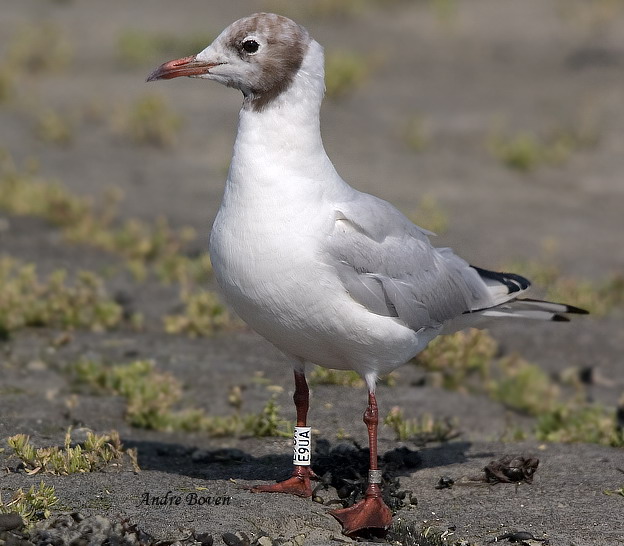
White E9UA - Termunterzijl, augustus 2010. © Andre Boven. 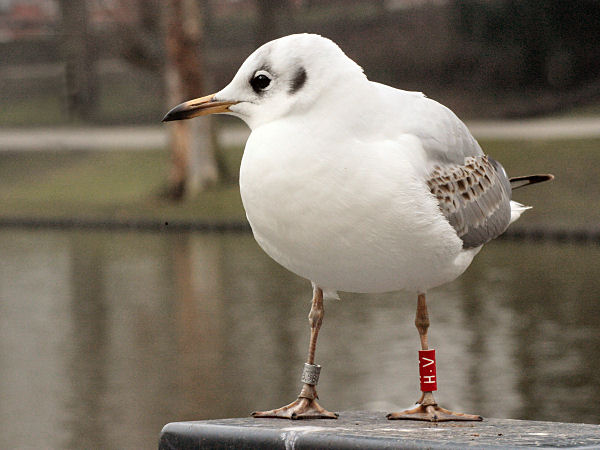
Rood HV - Groningen, Noorderplantsoen. © Ana Buren. Origin of the wintering Black-headed Gulls in The Netherlands The Black-headed Gulls in The Netherlands which stay here in winter mainly breed in the countries around the Baltic Sea. The main direction of migration is from NE to SW. A small part originates from the north (Norway) or from the east (Chechia and Slovenia) and some migrate from the southeast (Hungaria) to the Netherlands to stay here during the winter. 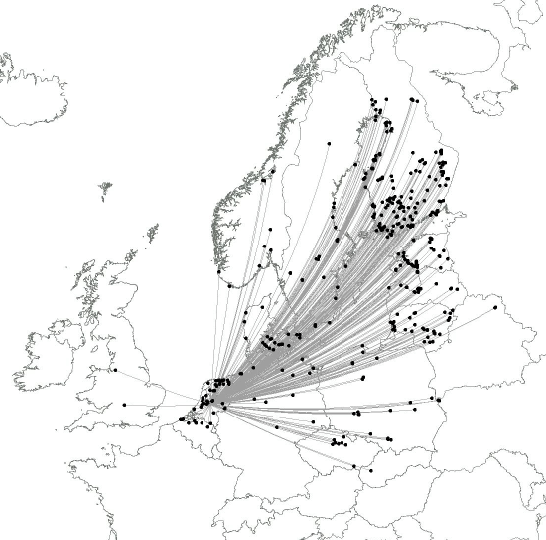
Ringing places Black-headed Gulls, ringed as pul and seen by Frank Majoor in The Netherlands, November - February. The wintering areas of the Black-headed Gulls breeding in The Netherlands Most of the Dutch birds which breed here, and after the breeding season migrate towards the south (Belgium, France and Spain) or to the southwest (England and Ireland). A small group flies to the southeast (Italy). In addition, there is a small number of birds which remain in The Netherlands during the entire year. 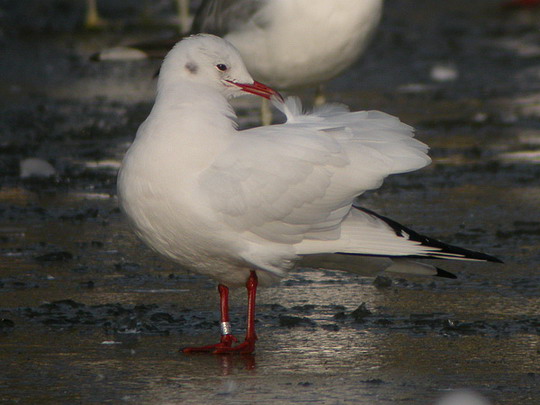
Different migration strategies of Black-headed Gulls There are Black-headed Gulls which depart from their breeding areas, arrive early in The Netherlands (Yellow 13, White LSL and Blue A6) on an annual basis (July-August) and Black-headed Gulls which arrive late (October-November) on an annual basis (Yellow AH). In September there is no arrival or migration of Black-headed Gulls! A part of the group of birds which has arrived early, migrates later (October-November) towards the South (Blue A6 and White LSL) and another part of this group stays in The Netherlands during the entire winter (Yellow 13). Approximately 30% of the wintering Black-headed Gulls in The Netherlands flies towards the south at the onset of a severe frost period (White LFY). Breeding site fidelity Many Black-headed Gulls are faithful to their breeding area and in a lesser extent to their wintering area. It is also possible that after wintering some years in The Netherlands Black-headed Gulls suddenly wintering somewhere else (White LZH, Yellow VU, Yellow 3Z and White LKU). I addition there are wanderers without a fixed site (Yellow H1). Interesting life histories Some interesting life histories are shown here. |
Photo's from observers
From many observers I have received photo's with the Black-headed Gulls which have been read, most often with colour rings.
See here the Black-headed gull rings photo gallery (update 10-09-2013)


